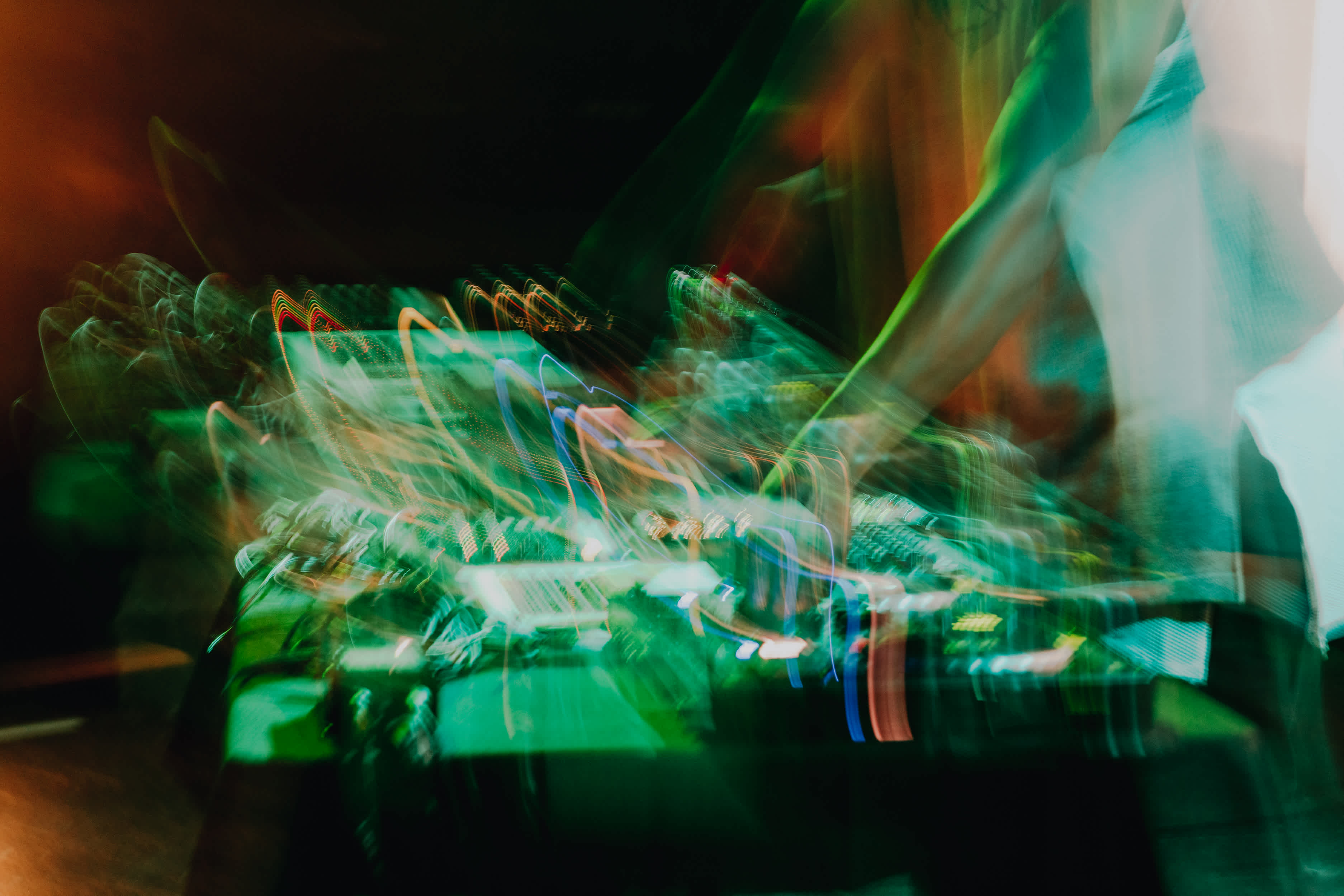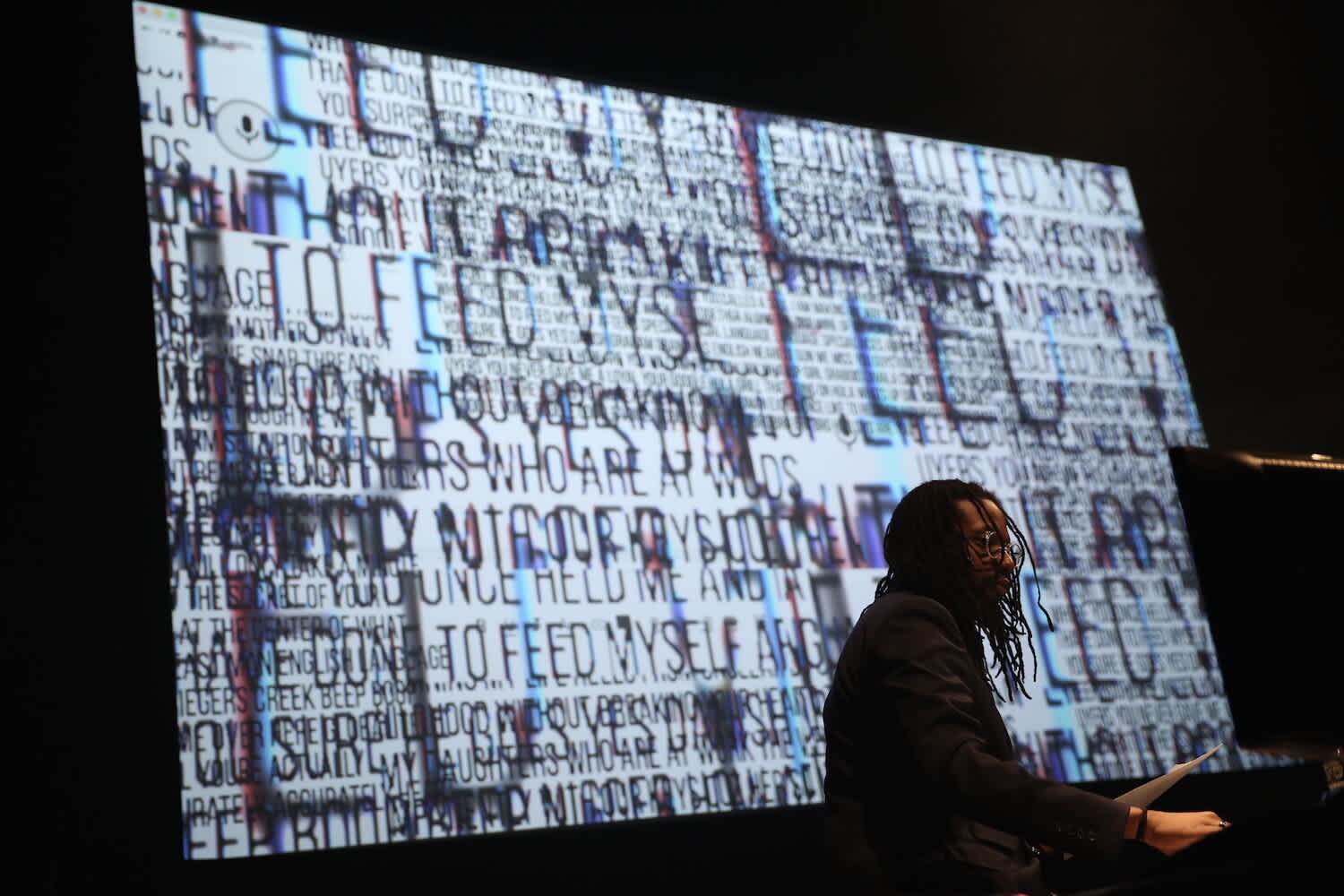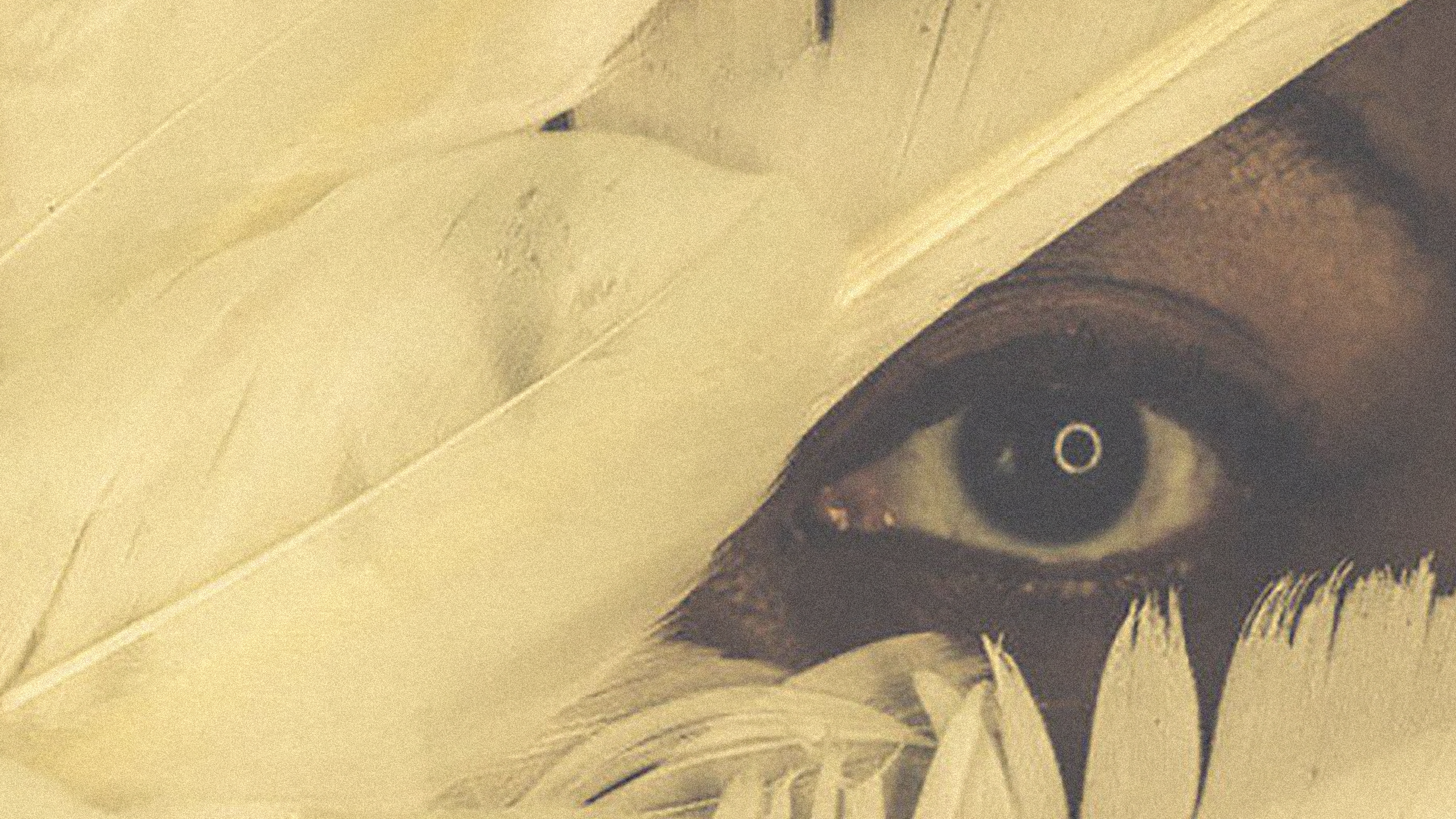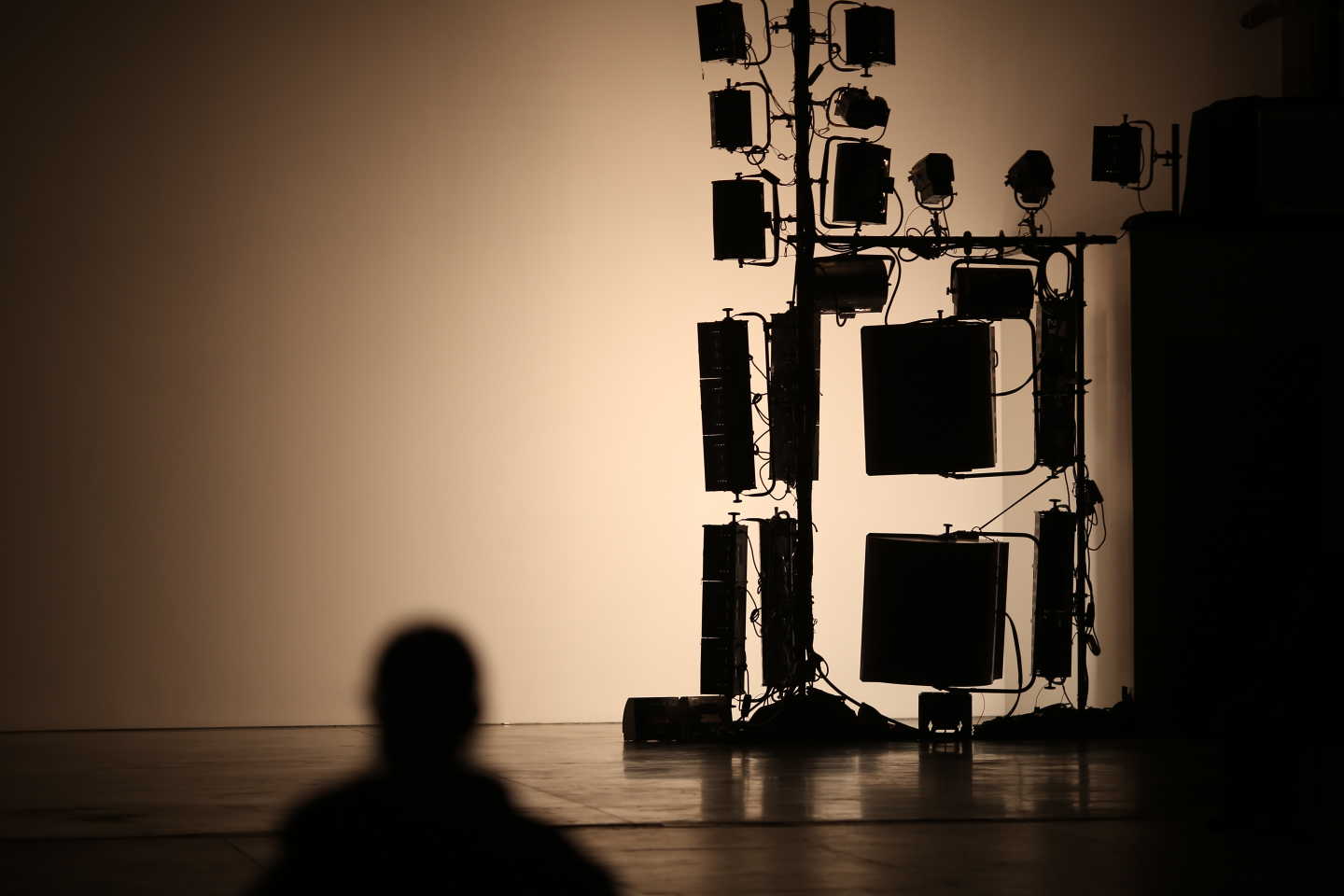
Credits:
By Tim Griffin, Executive Director and Chief Curator
September 30, 2019
For five weeks from today through the end of October, artist James Allister Sprang is in residence in The Kitchen’s first-floor space, developing a new iteration of his ongoing project Turning Towards a Radical Listening.
Sprang will begin his residency by organizing a sound-based sculptural installation, which will become a stage for public conversations with poets Rachel Eliza Griffiths, Tracie Morris, and M. NourbeSe Philip regarding their understandings of language and its interior codes. Recorded exchanges from these discussions will become the sound material for Sprang’s installation, with performances during the final two weeks of his residency consisting of the recordings being run through voice-to-text software and other applications to highlight—and potentially to make new meaning from—algorithmic alterations and glitches.
Sprang spoke this week with The Kitchen’s Executive Director and Chief Curator Tim Griffin.
As an artist, you’ve moved continually across sculpture, performance, writing, and sound installation. Taking into consideration that broader context—and knowing how your work at The Kitchen will take different forms during an extended residency—what prompted you to make Turning Towards a Radical Listening in particular?
I had a couple realizations align recently when I was trying to use VR technology as a clarifying metaphor for what I’d been thinking about in all those other mediums. I had been teaching myself how to code in VR language, wanting to subvert it, and I realized that what I wanted to do was impossible in the realm of virtual reality. And so I turned to sound instead, researching how one can spatialize the language we use in life. I came upon some very exciting possibilities, but the pivotal moment came one day when I was sitting in my basement in front of my laptop, looking at an empty page in Microsoft Word, trying to transcribe the spoken word “n***** .” And I just watched the program writing everything but that word. Here I was, sitting in front of my computer, experiencing a moment in which both my language, and by extension, my presence weren’t being recognized—which is part of a long history of failures for auto-recognition technology to be programmed to the configuration of Black presence. It was those two realizations in tandem—turning to sound when I understood that VR was not a viable avenue, and even then encountering this failure to be recognized—that started the process that is now Turning Towards a Radical Listening.
Let me plumb that a little bit, moving from that concrete anecdote to your work in other mediums. How were you already considering biases in language before you ran up against these questions in technological spheres? How were you already looking at codes as they are figuring into language not only literal but also cultural?
I mean, this is something that many people have pointed to: auto-recognition software is programmed with biases, from the faucet in public bathrooms to the early digital camera. So that is something I was always aware of. But part of wrangling with the anecdote I just gave you is considering both the more poetic and the technical aspects of what it means to program with technology. In this regard, we have to look at machine learning, which is essentially a kind of machine listening, by targeting large sets of data in a very particular way, providing the machine with that, and preparing it to “hear” the data that will be introduced in the future.
Ultimately this approach relates to how we are ourselves programmed, and how we ourselves come into consciousness. We build our technology based upon who we are. So, when I started working with spatial sound and transcription technology, it quickly became apparent that it was a poetic way to point to the larger issues that I think need to be addressed—namely racial bias and the long entanglements of white supremacy.
While you’re dealing with the language and codes of technology, the material of this particular residency is the language put forward by poets. What prompted you to go with poets, and how does that relate to the sort of programming that you’re talking about?
I’m interested in poetics. I’m interested in what that can be and what that can’t be. Or what that is and what that is not. I’m thinking through abstracted notions of algorithms and the ways in which the product of machine learning is generating language. I’m trying to reveal how extensive the race line is in our society. In order to continue thinking through this I need to generate recordings involving speech. Speaking to poets who use language as their material—and who are doubly conscious of how our realities are constructed through and by language—is a succinct way to start to think through language and sound.
You use the term doubly. Would you say a contemporary iteration of Double Consciousness is being parsed here?
Yes. I’m interested in what it feels like when you exceed the parameters of a paradigm.
What are some of the impacts and effects you’re anticipating through the installation? In upcoming weeks, audiences will not only hear your conversations with poets about the programmatic nature of language, but also encounter the abstraction of these codes—or, as you put it, the subversion of codes in the installation.
It’s a really good question. I have been trying to address and give succinct contours to my interests, and I think the best analogy is found in the theories of the scholar Diana Deutsch—and particularly in her example of the High-Low Sonic Illusion, with which I will begin the performances of Towards a Radical Listening.
We’re all familiar with optical illusions. But very few people think about how sonic illusions exist, and Deutsch has been instrumental in demonstrating that our perception even of basic musical patterns is shaped by the language spoken around us, for example. In fact, the differences in what we hear reflect differences in the very organization of our consciousness.
For Deutsch’s High-Low Sonic Illusion, the words high and low are spoken quickly, basically creating the effect of panning for audiences. But incredibly, when the speakers playing a recording of these words are positioned in the right way in relationship to the body, the mind begins to generate all sorts of other language from a phrase that it knows it is not. Even if you know that you are hearing the phrase “high-low”—split up and spread across two speakers—your mind starts to generate a whole bunch of other bits of language. And this newly generated language is entirely based on the psyche.
Essentially, that’s what I’m trying to do in Turning Towards a Radical Listening. I’m trying to put people in the room and make them aware of the problematics and the slippages that occur in the process of generating information. And because I believe we fashion our machines after our societies, I would hope that we can tune into how we are generating meaning while watching a machine do the same thing. While I don’t know exactly what will appear on the screen as part of this sound installation at The Kitchen, I do know that any transcription we’ll look at will fail to represent the sonic experience we’re having in the room. That sonic experience is going to be unlike any that most have experienced. And I would hope that in the process of experiencing that, people can tune into how a failure of recognition is happening in real time all over the country and all around the world.
Yes, and that is a radical listening because that’s a real-time subversion of people’s synthesis of what they’re hearing.
Yes, that’s what it’s about. Listening is something that we all do, but radical listening is listening with the awareness of the pitfalls one is susceptible to while listening. My collaborators and I are trying to acknowledge and navigate that.
You also have a sculptural installation coming up in a solo exhibition at Knockdown Center titled Fragment Scapes. How does that literal material practice interface with what you’re describing here?
I really consider both of these projects as part of the same exploration, and ultimately as the same project. At The Kitchen I am making soundscapes in the tradition of musique concrete. At Knockdown Center there will be a series of photographic images, whose subjects are these large mounds I build with fragments of concrete. I poured the concrete myself, having put superabundant amounts of pigment into those pours so that the concrete was very fragile when it solidified. And then I simply walked on the fragile concrete, which fragmented, and I used the fragments to build these mounds. Finally, I documented them with a camera from above. So the results of this really arduous and heavy process are these very light, one-dimensional images that are evacuated of gravity, dimension, and process.
I’m interested in challenging the document and, more precisely, challenging how viewer and document meet. I’m interested in how this questioning leads to a stronger understanding of the information and Knowledge we have at our disposal. During my residency at The Kitchen, you could say I’m attempting to create an experience where we can all sit together and watch and listen as the document aggregates. While at Knockdown Center, you’ll encounter documents after the fact.


